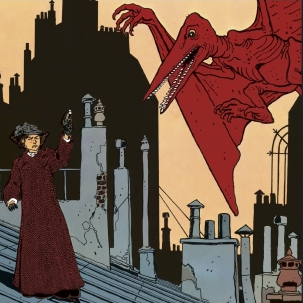Main approaches
Back to our problem, how to we differentiate the model?
Main approaches:
- Manual
- Finite Differences
- Symbolic Differentiation
- Automatic Differentiation
Computational Economics (ECO309)
2025-05-28
Study Neoclassical Model of Growth with Deterministic Productivity Shocks
Transition Equation \[\begin{eqnarray} k_t & = & (1-\delta) k_{t-1} + i_{t-1} \\ z_t & = & \rho z_{t-1} \end{eqnarray} \]
Definition: \[c_t = \exp(z_t) k_t^\alpha - i_t\]
Control \(i_t\in[0, \exp(z_t)k_t^\alpha[\)
Objective: \[\max_{i_t} \sum_{t\geq0} \beta^t U(c_t)\]
\[\text{s.t.}\forall t\geq 0, \; \; \begin{eqnarray} \mu_t:\quad & 0 & \leq & i_t \\ \nu_t:\quad & i_t & \leq & \exp(z_t) k_t^{\alpha} \\ \lambda_t:\quad & i_t & = & \exp(z_t) k_t^{\alpha} - c_t\\ q_t:\quad & k_{t+1} & = & (1-\delta) k_{t} + i_{t} \end{eqnarray}\]
\[\begin{eqnarray} \forall t\geq0 & \frac{\partial \mathcal{L}}{\partial i_t} & = & 0 \\ & \frac{\partial \mathcal{L}}{\partial c_t} & = & 0 \\ & \frac{\partial \mathcal{L}}{\partial k_{t+1}} & = & 0 \end{eqnarray}\]
| \(\mu_t \geq 0\) | \(i_t \geq 0\) |
| \(\nu_t \geq 0\) | \(\exp(z_t) k_t^{\alpha}-i_t \geq 0\) |
| \(q_t \geq 0\) | \((1-\delta) k_{t} + i_{t} - k_{t+1} \geq 0\) |
| \(\lambda_t \geq 0\) | \(\exp(z_t) k_t^{\alpha} - i_t -c_t = 0\) |
| \(\mu_t \geq 0\) | \(i_t \geq 0\) |
| \(\nu_t \geq 0\) | \(\exp(z_t) k_t^{\alpha}-i_t \geq 0\) |
| \(q_t\) | \((1-\delta) k_{t} + i_{t} - k_{t+1} = 0\) |
| \(\lambda_t\) | \(\exp(z_t) k_t^{\alpha} - i_t -c_t = 0\) |
Let’s review them:
Optimality Condition: \[\beta \left[ \frac{\left(c_{t+1}\right)^{-\gamma}}{\left(c_t\right)^{-\gamma}} \left( (1-\delta + \alpha exp(z_{t+1})k_{t+1}^{\alpha -1}) \right)\right] = 1\]
Definition: \[c_t = exp(z_t) k_t^\alpha - i_t\]
Transition: \[k_t = (1-\delta) k_{t-1} + i_{t-1}\] \[z_t = \rho z_{t-1}\]
\[ \begin{eqnarray} 1 & = & \beta \left( (1-\delta + \alpha {\overline{k}}^{\alpha -1}) \right) \\ \overline{k} & = & (1-\delta) \overline{k} + \overline{i} \\ \overline{z} & = & \rho \overline{z} \\ \overline{c} & = & \overline{k}^{\alpha} - \overline{i} \end{eqnarray} \]
\[\begin{eqnarray} \overline{k} & = & \left( \frac{\frac{1}{\beta}-(1-\delta)}{\alpha} \right)^{\frac{1}{\alpha - 1}} \\ \overline{i} & = & \delta \overline{k} \\\ \overline{z} & = & 0 \\ \overline{c} & = & \overline{k}^{\alpha} - \overline{i} \end{eqnarray}\]
Optimality conditions \[\begin{bmatrix} . & . & . & . \\ \end{bmatrix} \begin{bmatrix} \Delta i_t \\ \Delta c_t \\ \Delta k_t \\ \Delta z_t \end{bmatrix} = \begin{bmatrix} . & . & . \\ \end{bmatrix} \begin{bmatrix} \Delta i_{t+1} \\ \Delta c_{t+1} \\ \Delta k_{t+1} \\ \Delta z_{t+1} \end{bmatrix} \]
Transition \[ \begin{bmatrix} \Delta k_t \\ \Delta z_t \end{bmatrix} = \begin{bmatrix} . & . \\ . & . \end{bmatrix} \begin{bmatrix} \Delta k_{t-1} \\ \Delta z_{t-1} \end{bmatrix} + \begin{bmatrix} . \end{bmatrix} \begin{bmatrix}\Delta i_{t-1}\end{bmatrix}\]
?: Help]: Package Management;: System ConsoleccallfcallPyCall] add PackageNameProject.toml; cd path_to_the_right_project; pwd (print working directory)] activate . (. universally means current director)] add PackageNameBack to our problem, how to we differentiate the model?
Main approaches:
eps()Two main libraries:
Example using Symbolics:
does not provide mathematical insights but solves the other problems
can differentiate any piece of code
two flavours
Consider this simple function
Instead of rewriting source code, we can use dual numbers to perform exactly the same calculations.
struct DN<:Number
x::Float64
dx::Float64
end
+(a::DN,b::DN) = DN(a.x+b.x, a.dx+b.dx)
-(a::DN,b::DN) = DN(a.x-b.x, a.dx-b.dx)
*(a::DN,b::DN) = DN(a.x*b.x, a.x*b.dx+a.dx*b.x)
/(a::DN,b::DN) = DN(a.x/b.x, (a.dx*b.x-a.x*b.dx)/b.dx^2)
...Try it on function f What do we miss ?
This approach (and automatic differentiation in general) is compatible with control flow operations (if, while, …)
Let’s see it with the dual numbers defined by ForwardDiff library:
import ForwardDiff: Dual
x = Dual(1.0, 1.0)
a = 0.5*x
b = sum([(x)^i/i*(-1)^(i+1) for i=1:5000])
# compare with log(1+x)There are many flavours of automatic differenation (check JuliaDiff.org)
General formulation of a linearized model: \[ \begin{eqnarray} A s_t + B x_t + C s_{t+1} + D x_{t+1} & = & 0_{n_x} \\ s_{t+1} & = & E s_t + F x_t \end{eqnarray}\] where:
Remark:
In the neoclassical model: \[\begin{eqnarray} s_t & = & (\Delta z_t, \Delta k_t) \\ x_t & = & (\Delta i_t, \Delta c_t) \end{eqnarray}\]
The linearized system is: \[\begin{eqnarray} A & = & ...\\ B & = & ...\\ C & = & ...\\ D & = & ...\\ E & = & ...\\ F & = & \end{eqnarray}\]
What is the solution of our problem?
In the neoclassical model
The states are \(k_t\) and \(z_t\)
The controls \(i_t\) and \(c_t\) must be a function of the states
In the linearized model: \[\Delta i_t =i_z \Delta z_t + i_k \Delta k_t\] \[\Delta c_t =c_z \Delta z_t + c_k \Delta k_t\]
Replacing in the system:
\[\Delta x_t = X \Delta s_t\] \[\Delta s_{t+1} = E \Delta s_t + F X \Delta s_t\] \[\Delta x_{t+1} = X \Delta s_{t+1}\] \[A \Delta s_t + B \Delta x_t + C \Delta s_{t+1} + D \Delta x_{t+1} = 0\]
If we make the full substitution:
\[( (A + B X) + ( D X + C) ( E + F X ) ) \Delta s_t = 0\]
This must be true for all \(s_t\). We get the special Ricatti equation:
\[(A + B {\color{red}{X}} ) + ( D {\color{red}{X}} + C) ( E + F {\color{red}X} ) = 0\]
This is a quadratic, matrix ( \(X\) is 2 by 2 ) equation:
requires special solution method
there are multiple solutions: which should we choose?
today: linear time iteration selects only one solution
To solve the model we use the backard operator: \[T: \begin{eqnarray} \mathbb{R}^{n_x} \times \mathbb{R}^{n_s} & \rightarrow & \mathbb{R}^{n_x} \times \mathbb{R}^{n_s} \\X_{t+1} & \mapsto & X_t \text{s.t.} F(X_t,X_{t+1})=0\end{eqnarray}\]
We need to study \(T^{\prime}\) of (\(X\)).
